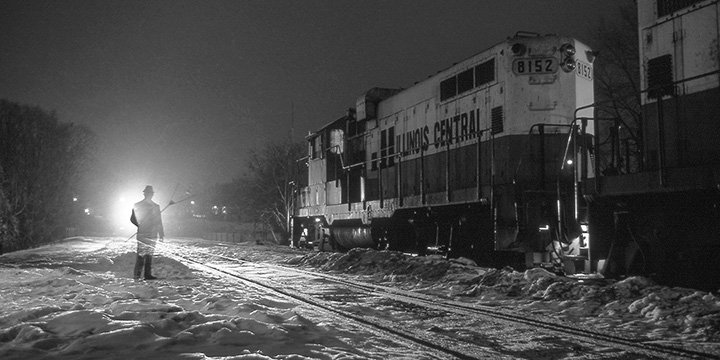|
Growing Up in a Railroad Vacuum This is a selection of imagery that I made between 1975 and 1979 (with a few later outliers). The title comes from one of my friends—he'd moved from central Illinois and was accustomed to more train activity than Bloomington, Indiana, could muster. The timeframe makes the subject matter fairly interesting—first generation power, railroads that have been subsumed, as well as some lines that have been abandoned altogether. I was a kid at the time, between fifteen and nineteen, and can’t say that my study of railroads went very deep. I was interested in rarities for that time: F-units and interesting paint schemes. But, given the influence of my mentors (Ron Potsch, worked for the Illinois Central Gulf, and Gary Dolzall, wrote a sturdy history of the Monon), I was more interested in scenic, action, and night photographs rather than roster shots. 
After this short but fairly intense period of shooting, as well as a brief stint working for the Illinois Central Gulf (as a third-trick operator/clerk in Palestine, Illinois), I went off to college and did not really pursue railroad photography for more than thirty years. The current activity in which I am engaged, the mining of these old negatives and slides, is about a proper education. Through the research of these artifacts, I’m teaching myself about railroading during the 1970s—that period just prior to the Staggers Rail Act of 1980. I'll begin by comparing the relatively modern Illinois Central line (completed in 1906) with the older, and more organic, Monon (built mid-19th century). I will then expand the scope somewhat around the Midwest and just a bit of the West. Along the way I may touch upon the tradition of mentorship in photography, as well as the value of historically valuable, but flawed, images.
II. Indiana
b. Louisville and Nashville (former Monon) c. Amtrak’s Floridian d. Other roads in close proximity (Milw, B&O, Southern, Conrail)
b. GM&O c. Conrail d. Wabash Valley (while not successful, a glimpse of regional railroads to come) V. Iowa VI. The End
b. Riding the Rio Grande Zephyr and Amtrak’s North Coast Hiawatha c. Milwaukee, Wisconsin VII. Epilogue (text below)—including a few things shot since the 1970s Please go here to see images with captions. Richard Koenig Genevieve U. Gilmore Professor of Art Kalamazoo College |